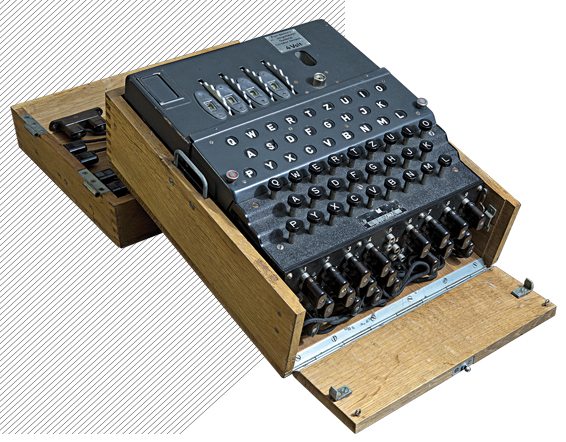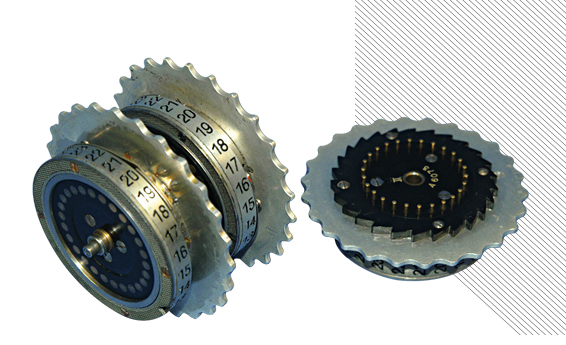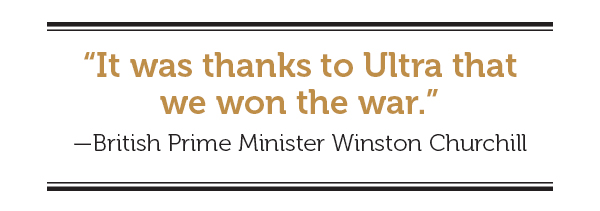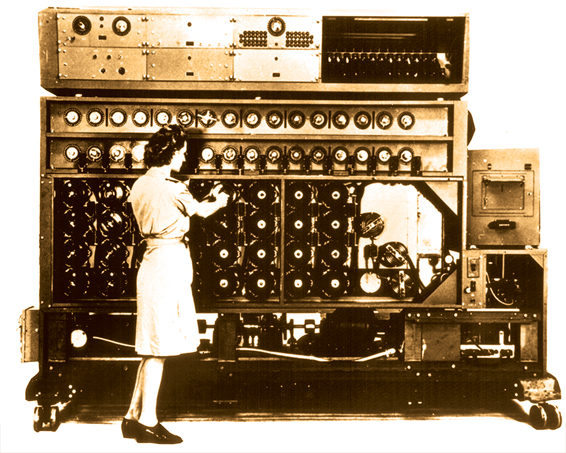In this new video interview, Legion Magazine sat down with mathematician, computer scientist and Enigma Machine collector and expert Richard Brisson to discuss the riddle of the Enigma.
BONUS: Be sure to look out for the red letters throughout the questions in the video. If you unscramble them, it will spell something or someone who is mentioned in the video.
Enigma Machine Contest

A four-rotor Enigma machine (top) used by the German navy, now owned by Ottawa collector Richard Brisson. [Stephen J. Thorne/Legion Magazine]
Allied codebreakers shortened the war by decrypting
German messages
To generate secret codes in the Second World War, Germany used a machine called Enigma (Greek for riddle). Each branch of the German military developed its own Enigma version, with constant tweaks to make messages ever harder to decipher. Cracking its secrets was anything but child’s play.
The heart of Enigma was a set of five to eight interchangeable rotors, aligned in a row of three or four. The rotors moved to new positions with each keystroke, ensuring a different letter was substituted for each letter typed. Additional security came from changing the starting position of the rotors with each message and changing the order of the rotors every day.
“Each day at midnight, senders and receivers would reset their machines,” said Richard Brisson, a retired Communications Security Establishment mathematician whose Ottawa-area private collection boasts two military Enigmas. Senders and receivers used a monthly key list to learn which rotors from the set to use, and in which order. Senders determined the rotors’ starting position for each message and transmitted it—encrypted, of course—to the receiver. Enigma’s coded messages were so secure because they were well scrambled. As operators typed messages into Enigma, replacement letters would be recorded by hand, then transmitted by Morse code.
Throughout the war, the German military relied on Enigma’s coded messages to convey battle plans, deliver orders for deployment of troops, tanks, submarines and aircraft, record ships’ cargo, and report fuel and equipment shortages.

To create more confusion, numbers were used instead of letters on some Enigma rotors. [U.S. National Cryptologic Museum]
“The strength of the large numbers [of code combinations], numbers so vast they are really beyond true comprehension, led the Germans to have absolute and complete confidence in the integrity of the Enigma cipher machine. And in that misplaced confidence, the Germans were absolutely, completely, and fatally wrong” writes Ray Miller of the U.S. National Security Agency, who calculated the number of possible Enigma configurations.
The Germans thought Enigma’s codes were unbreakable. They were wrong. Britain set up a sophisticated system for capturing and decrypting enemy messages at Bletchley Park, north of London. The resulting intelligence was code-named Ultra.

“To break an Enigma message, you need an Enigma message,” said Brisson. Thousands of wireless operators around the world, including Canada, trolled radio frequencies ceaselessly, recorded and sent coded enemy messages to Bletchley Park to be deciphered and analyzed.
A team of 20 intercept operators in Ottawa, like counterparts in other parts of the country, listened for tones differentiating hand-keyed messages from machine-generated signals. “The hand-keyed signals meant it was from a U-boat that had surfaced,” recalled former radio interceptor Ernie Brown in an article in the Ottawa Citizen.
In England, intelligence from many sources was “fitted together like a gigantic jigsaw puzzle to produce as complete a picture as possible of what the enemy was doing,” according to the Bletchley Park website.
One of Ultra’s earliest successes came in the Battle of the Atlantic. For seven months after the capture of a four-rotor Enigma machine and code books from a U-boat in 1941, Bletchley codebreakers could read Germany’s naval signals, resulting in a decline in convoy shipping losses.

An American-built Bombe electromechanical decryption machine was used to decode German navy communications in 1944. [U.S. National Security Agency/00015]
By the numbers
1970s
Decade the public learned of Enigma codebreakers
20,000-40,000
Estimated number of Enigma machines manufactured for the war
2 x 10145
Theoretical number of settings for four-rotor navy Enigma machines
4,000
Number of Enigma messages the Allies were reading daily in 1942
75
Percentage of women among Bletchley Park’s 10,000 employees
Advertisement



















